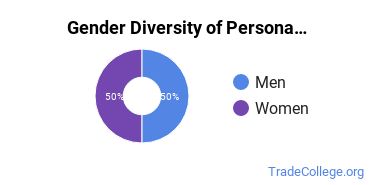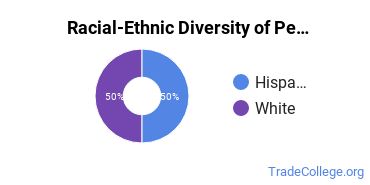Personal & Culinary Services at Bastyr University
What traits are you looking for in a personal and culinary services school? To help you decide if Bastyr University is right for you, we've gathered the following information about the school's personal and culinary services program.Bastyr University is located in Kenmore, Washington and approximately 904 students attend the school each year.
Want to know more about the career opportunities in this field? Check out the Careers in Personal & Culinary Services section at the bottom of this page.
Featured schools near , edit
Bastyr University Personal & Culinary Services Degrees Available
- Bachelor’s Degree in Personal & Culinary Services
Bastyr University Personal & Culinary Services Rankings
The following rankings from College Factual show how the personal and culinary services progam at Bastyr University compares to programs at other colleges and universities.
Note: Although rankings can help you see some information about a school, it's not a good idea to depend on them alone. Be sure to check out other things about the school before making your decision to attend.
Bachelor’s Degree Overall Quality & Other Notable Rankings
The personal and culinary services major at Bastyr University is not ranked on College Factual’s Best Colleges and Universities for Personal & Culinary Services. This could be for a number of reasons, such as not having enough data on the major or school to make an accurate assessment of its quality.
| Ranking Type | Rank |
|---|---|
| Most Focused Personal & Culinary Services Bachelor’s Degree Trade Schools | 19 |
| Most Popular Personal & Culinary Services Bachelor’s Degree Trade Schools | 27 |
| Most Focused Personal & Culinary Services Trade Schools | 1,755 |
| Most Popular Personal & Culinary Services Trade Schools | 1,883 |
Personal & Culinary Services Student Demographics at Bastyr University
Take a look at the following statistics related to the make-up of the personal and culinary services majors at Bastyr University.
Bastyr University Personal & Culinary Services Bachelor’s Program

The following table and chart show the race/ethnicity for students who recently graduated from Bastyr University with a bachelor's in personal and culinary services.

| Race/Ethnicity | Number of Students |
|---|---|
| Asian | 0 |
| Black or African American | 0 |
| Hispanic or Latino | 2 |
| White | 2 |
| International Students | 0 |
| Other Races/Ethnicities | 0 |
Bastyr University also has a doctoral program available in personal and culinary services. In 2021, 0 student graduated with a doctor's degree in this field.
Concentrations Within Personal & Culinary Services
If you plan to be a personal and culinary services major, you may want to focus your studies on one of the following concentrations. The table shows all degrees awarded in this field awarded for all degree levels at Bastyr University. A concentration may not be available for your level.
| Concentration | Annual Degrees Awarded |
|---|---|
| Culinary Arts | 4 |
Related Majors
Careers That Personal & Culinary Services Grads May Go Into
A degree in personal and culinary services can lead to the following careers. Since job numbers and average salaries can vary by geographic location, we have only included the numbers for WA, the home state for Bastyr University.
| Occupation | Jobs in WA | Average Salary in WA |
|---|---|---|
| Restaurant Cooks | 32,510 | $32,370 |
| Food Preparation and Serving Worker Supervisors | 21,740 | $41,430 |
| Bartenders | 13,630 | $35,390 |
| Institution and Cafeteria Cooks | 10,650 | $34,230 |
| Hairdressers, Hairstylists, and Cosmetologists | 10,610 | $40,910 |
References
*The racial-ethnic minorities count is calculated by taking the total number of students and subtracting white students, international students, and students whose race/ethnicity was unknown. This number is then divided by the total number of students at the school to obtain the racial-ethnic minorities percentage.
- College Factual
- National Center for Education Statistics
- O*NET Online
- Image Credit: By Joe Mabel under License
More about our data sources and methodologies.
Featured Schools
 Request Info
Request Info
|
Southern New Hampshire University You have goals. Southern New Hampshire University can help you get there. Whether you need a bachelor's degree to get into a career or want a master's degree to move up in your current career, SNHU has an online program for you. Find your degree from over 200 online programs. Learn More > |
